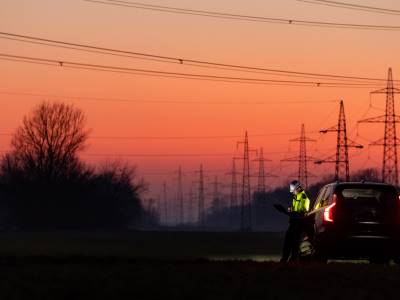Vehicle to Grid (V2G)
What is V2G?
Vehicle to Grid (V2G) is a subset of the larger concept of a vehicle providing electrical power to an external device. This broader concept is often called Vehicle to Everything (V2X) and includes Vehicle to Load (V2L), Vehicle to Home (V2H), and Vehicle to Grid (V2G).
|
Vehicle to Load can involve smaller loads like charging a cell phone, but with newer EVs can be something larger like a refrigerator, power tools, or big-screen TV! |
|
|---|---|
|
Vehicle to Home is where the vehicle sends energy into the house, such as providing backup power during an outage.
|
|
|
Vehicle to Grid is where the vehicle sends energy back out onto the electrical grid to lower your bill or earn additional revenue.
|
|
Why would you want to do V2G?
There are many potential benefits to doing V2G including:
- Most V2G systems can also do V2H and provide whole-home backup during an outage. An average US home uses 30 kWh/day[i] so with a 75kWh electric vehicle battery pack and some conservation measures an electric vehicle can support multi-day outages and still have energy left to drive!
- For people who want to see the energy generated from their solar photovoltaic (PV) system used on-site instead of being exported to the grid, V2G provides an alternative to stationary energy storage
- Revenue generation, as customers in Massachusetts can participate in the Connected Solutions program while customers in New York can earn revenue through VDER
[i] https://www.eia.gov/energyexplained/use-of-energy/electricity-use-in-homes.php.
Additional requirements for doing V2G
V2G requires a special charger that can export power to the grid in a manner that is safe and complies with all utility interconnection requirements, just as a solar inverter would. This also increases the permitting and interconnection timeline as electric utilities like National Grid will process the application in the same way as a solar or home battery storage application.
V2H requires a slightly less sophisticated charger or vehicle, as a transfer switch is used to safely disconnect your home from the grid.
The cost of this additional equipment can vary between manufacturers. As of 2024, a standard level 2 home charger costs between $500 to $1500 plus installation, while an equivalent V2H or V2G system costs between $6,000 and $10,000 plus installation. Certain vehicle manufacturers will also limit the amount of energy that can be pulled from a vehicle without violating the terms of their warranty. Be sure to explore the details and capabilities of any V2X system you are considering.
Want to learn more?
To learn more about potential revenue through Connected Solutions ConnectedSolutions | National Grid (nationalgridus.com)
For more information on V2X, check out:
- Vehicle-Grid Integration (VGI) — VGIC (vgicouncil.org)
- Home: V2G Hub | V2G Around the world (v2g-hub.com)
- NREL: Electric Vehicle Grid Integration
To learn more about National Grid’s managed charging programs for customers, visit:
Frequently Asked Questions
National Grid worked with Highland Electric to pilot vehicle to grid technology for their school bus fleet. You can read more about the pilot and partnership here: Highland Electric Fleets Coordinates Electric School Buses' Summer Job - Supporting Local Grid with Vehicle-to-Grid Technology (prnewswire.com)
No, there is no minimum or maximum charger power rating required for V2G. However, the charger will need to be “bi-directional” which means that it can pull power from the vehicle and push it back to the grid. Look for “DC V2G” chargers under “Type” in the list of approved products EPRI Home to find a few examples.
No, V2G can be done on the same meter as the rest of the facility or EV chargers. Note that the meter may need to be updated to ensure that it is capable of measuring bi-directional power flow.
Customers will generally recharge their vehicles whenever they would like after an event. For example, if there is a 1hr power outage during which a customer uses their vehicle to power their home, the customer will either choose to recharge their vehicle directly after the outage is restored or wait until the regularly scheduled time they would normally recharge their vehicle based on their existing schedule or any managed charging or off-peak rebate programs they are enrolled in.
Vehicle manufacturers are increasingly supporting V2X, however what is allowed depends on the specific vehicle and warranty. Generally, a minor amount of V2X activity (i.e. once or twice a month) will have minimal impact on a vehicle’s warranty. However, continuous daily cycling may have warranty implications. To find out more, check with your vehicle manufacturer.
For general information, please see:
- Massachusetts - https://www.nationalgridus.com/ma-home/rates/service-rates
- New York - https://www.nationalgridus.com/Upstate-NY-Home/Rates/Service-Rates
For more specific inquiries, please Contact us (custhelp.com)
No, at this point V2G is handled under the existing tariffs for energy storage.
No, interconnections can be submitted at Home (site.com). Installations need to comply with National Grid’s standard Electrical Specifications and Interconnection Procedures. We recommend working with an installer who is familiar with interconnecting either solar or energy storage in National Grid’s service territory as they should be familiar with these requirements.



